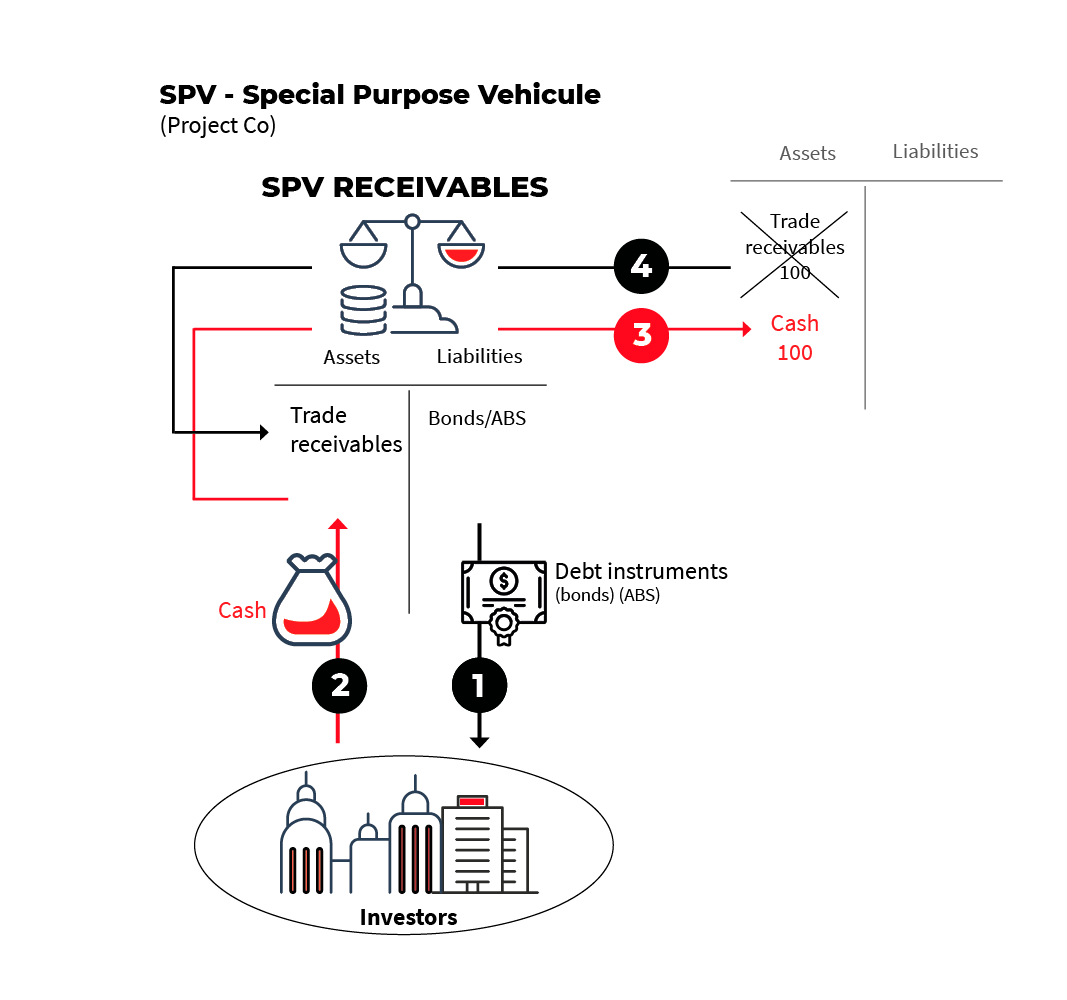
ABS: Asset Backed Securities
Definition of securitization
Securitization is a method of financing by transferring assets. The company will transfer a portfolio of assets (trade receivables, customer loans, etc.) to a vehicle (SPV or Special Purpose Vehicle) which will finance itself by issuing debt securities on the market.

If we look at the balance sheet of the SPV, there is only the debt on the liabilities side and the assets purchased from the original company on the assets side. This means that the debt (bonds) can only be repaid if the assets are repaid. The bonds therefore do not carry a risk on an issuer but on a portfolio of assets purchased from one (or more) companies.
To make sure that issuers are aware that they have a risk on a portfolio of assets and not on an issuer, these debt securities are called ABS or Asset Backed Securities.
The term ABS only describes the balance sheet of the SPV. On the assets side we find the assets purchased from the company and on the liabilities side the debt securities. We do have Asset Backed Securities.
The different types of ABS
The term ABS is the generic term. It can now vary depending on the type of assets purchased or the debt security issued.
For example, if the vehicle or SPV buys mortgage loans from banks, the ABS will be transformed into MBS or Mortgage Backed Securities, whether they are Residential Mortgage Backed Securities (RMBS) or Commercial Mortgage Backed Securities (CMBS).
We also have the whole series of CDOs or Collateralized Debt Obligations in which we find the purchase by the SPV of consumer loans (CLO or Collateralized Loan Obligation) or bond portfolios (CBO or Collateralized Bond Obligation) for example.